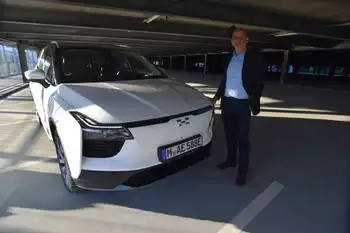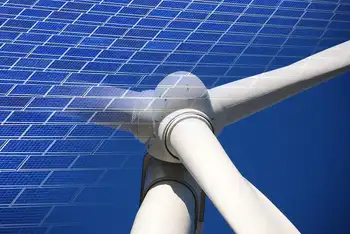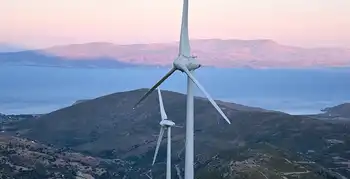A greener shade of Google
In 2004, he left Akamai, a content-delivery company where he was chief technology officer, to figure out how he could use his skills to help fight climate change.
In February, 2006, he was hired by California-based Google; he says his job is "to figure out what it would mean to make our operations greener and to make it happen." He's also vice-president of the Climate Savers Computing Initiative, a consortium of IT companies pushing for higher efficiency standards in the industry.
Q: You've been working in IT for 20-plus years. How has it evolved on the green side?
Ten years ago, no one outside of a few researchers talked about energy efficiency, because most computers didn't use much power, and there weren't that many of them, so the overall impact was so small as to be irrelevant from an environmental standpoint. Now, the industry has begun to wake up to the fact that there are a lot of computers out there - over a billion PCs around the world. And there will be 2.5 billion in a few short years. Individually, each one's like a light bulb. But add them all up, and it's a lot of energy.
Q: Unfortunately, most people don't think of their computers as energy-sucking appliances: They leave them on 24 hours a day. How do we change that?
One answer is that you educate people, show them that you can spend an extra $10 or $20 now to buy this computer and it will actually save you $50 over the next three years. So, it's partly a matter of what option you make easier.
And until recently, the easy option has been the cheaper, less-efficient PC.
This is a case of what economists call a market failure, where the right thing for the economy and for consumers is to buy the more efficient computer. If people were doing that in volume, the price premium would be very small, if not zero.
Q: What will it take to make that happen?
That's one of the reasons we started the Climate Savers Computing Initiative, to get manufacturers to agree on efficiency standards, and to get purchasers to commit to buying high-efficiency systems. And the assumption, which I think is a reasonable one, is that will drive down the price premium to the point where there won't be an advantage to building and buying a less efficient system. That's a voluntary thing, though. In other [industries], there have been times when governments have stepped in to regulate.
Q: Give me some examples.
The refrigerator you can buy today is bigger and has more features than one you would have bought 30 years ago and uses one quarter of the energy. Mostly, that was because of standards imposed by the California Energy Commission. The industry fought it tooth-and-nail, claiming it would be incredibly expensive, and for the first year or two, there was a moderate cost premium. But it came down very quickly, because very smart engineers who build those appliances were competing with each other, so they figured out how to drive costs out of the system.
You see it in cars, too. When the U.S. imposed fuel-economy standards in the mid-1970s, fuel economy went up - they either found a way to get rid of weight, or they reduced horsepower. But very quickly through innovation, they managed to get horsepower back up and keep driving up fuel economy.
Q: You're Google's green energy czar. What does that mean?
We can be as energy efficient as we want, but we still have computers, and we still use energy. And we're connected to the same grid as everyone else, and there's a lot of dirty energy attached to the grid. So we need to find a way to make energy a lot cleaner.
But one of the basic problems with carbon-neutral or very low-carbon sources of energy is that it's expensive, particularly compared with coal. I've spent three years trying to understand what technology is out there, and the somewhat disturbing answer is, there are billions of dollars going into clean tech, and lots of companies have interesting generation technologies that in a small number of years hope to be at grid-parity. But that means cost parity with natural gas, which is 8 or 9 or 10 cents per kilowatt hour. Coal is half or a third of that.
What that tells me is that we need to invest much more in early-stage innovation and idea generation, focused on an aggressive goal - not just incremental improvements to the technologies we've got, but really disruptive changes.
Q: What are some of the technologies you're looking at?
We've invested in a couple of solar companies, though honestly I don't think they'll be cost-competitive with coal in the next two or three years. We've invested in a couple of companies working on enhanced geothermal systems. What kind of resources has Google put into this?
We've invested $45-million in startup companies. We also have a small group of engineers doing our own internal R&D ... The goal is to think very big. And if we're successful, we may actually make a significant return from doing this. Because anybody who figures out how to produce clean energy at scale and at a cost that competes well with coal is gonna make a lot of money.
Q: Google has also made big strides on the efficiency side. Tell me about your data centres.
When we started six or seven years ago, we were leasing space in other people's data centres. As our engineers started to look at building our own, they concluded that the typical data centre is very energy-inefficient. There's a metric called power usage effectiveness, or PUE.
It's the ratio of total power going into the facility divided by the energy going to the actual equipment. So a PUE of 1 means that the facility itself consumes no energy other than what it delivers to the computers. Typical data centres built today have a PUE of 2, which means that for every watt going to the computers, there's an additional watt consumed by the facility. We have six purpose-built facilities around the world that have a PUE of 1.2. And it wasn't rocket science....
It's not more expensive to build high-efficiency centres if you're careful and creative about it; between the energy-efficiency work we've done on our servers and on our data centres, we've cut our energy bills in half. That's millions and millions of dollars.
Q: Why is Google such fertile ground for such projects?
Our founders and our CEO are very committed to environmental issues, and from the beginning, Google has fostered a culture of creativity and risk-taking that few companies have sustained as well and as long as we have.
So I think that's really at the core of it - a desire to solve big problems and a willingness to take the risks to try to solve them.
Google says its custom-built smart servers each use about 500 kilowatt hours of electricity, 300 kilograms of carbon dioxide and 3,700 litres of water less than a typical server. When a server is past its prime, the company reuses or recycles 100 per cent of the material.
More than 9,200 solar panels have been installed around company headquarters in Mountain View, Calif., since 2007. They produce 1.6 megawatts of electricity, enough to power 1,000 average California homes.
Each day, about 1,500 employees travel to the Mountain View campus on biodiesel shuttles. Workers may also use shared bicycles to get around the site, or one of a fleet of eight plug-in hybrid vehicles. Google says employees who "bike, walk, pogo-stick, unicycle, or otherwise self-power to work" earn money for a charity of their choice. One company café sources everything on its menu from within 240 kilometres, and all disposable flatware and utensils are biodegradable.
In Google's new Toronto office, about 85 per cent of the workstations (made partly from old soda cans) are recyclable. The office's electricity comes from Bullfrog Power. Doors and millwork are made from fast-growing "weed trees," and the rubber floors are made from old tires. When a room is empty, the lights, heating and air conditioning automatically turn off or adjust.
Related News

Tariffs on Chinese Electric Vehicles
CANADA - Canada, a rising star in critical EV battery minerals, finds itself at a crossroads. The question: should they follow the US and EU and impose tariffs on Chinese electric vehicles (EVs)?
The Allure of Protectionism
Proponents see tariffs as a shield for Canada's auto industry, a vital job creator. They argue that cheaper Chinese EVs, potentially boosted by government subsidies, threaten Canadian manufacturers. Tariffs, they believe, would level the playing field.
Consumer Concerns and Environmental Impact
Opponents fear tariffs will translate to higher prices, deterring Canadians from buying EVs. This could slow down Canada's transition to cleaner transportation,…




